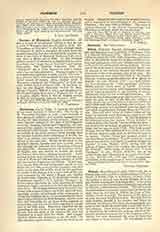

Florentina, Saint, Virgin; b. towards the middle of the sixth century; d. about 612. The family of St. Florentina furnishes us with a rare example of lives genuinely religious, and actively engaged in furthering the best interests of Christianity. Sister of three Spanish bishops in the time of the Visigothic dominion (Leander, Isidore and Fulgentius), she consecrated her virginity to God, and all four have been canonized by the Church. Florentina was born about the middle of the sixth century, being younger than her brother Leander, later Archbishop of Seville, but older than Isidore, who succeeded Leander as archbishop of the same see. Before his elevation to the episcopal dignity, Leander had been a monk, and it was through his influence that Florentina embraced the ascetic life. She associated with herself a number of virgins, who also desired to forsake the world, and formed them into a religious community. Later sources declare their residence to have been the convent of S. Maria de Valle near Ecija (Astigis), of which city her brother Fulgentius was bishop. In any case, it is certain that she had consecrated herself to God before the year 600, as her brother Leander, who died either in the year 600 or 601, wrote for her guidance an extant work dealing with a nun’s rule of life and with contempt for the world (“Regula sive Libellus de institutione virginum et de contemptu mundi ad Florentinam soror” P.L., 1, XXII, 873 sqq.). In it the author lays down the rules according to which cloistered virgins consecrated to God should regulate their lives. He strongly advises them to avoid inter-course with women living in the world, and with men, especially youths; recommends strict temperance in eating and drinking, gives advice concerning the reading of and meditation on Holy Scripture, enjoins equal love and friendship for all those living together in community, and exhorts his sister earnestly to remain true to her holy state. Florentina regulated her life according to the advice of her brother, entered with fervor into the spirit of the religious life, and was honored as a saint after her death. Her younger brother Isidore also dedicated to her his work “De fide catholica contra Judaeos”, which he wrote at her request. Florentina died early in the seventh century and is venerated as the patroness of the diocese of Plasencia. Her feast falls on June 20. The name is written Florentia in the Roman martyrology, but Florentina is without doubt the correct form.
J. P. KIRSCH

